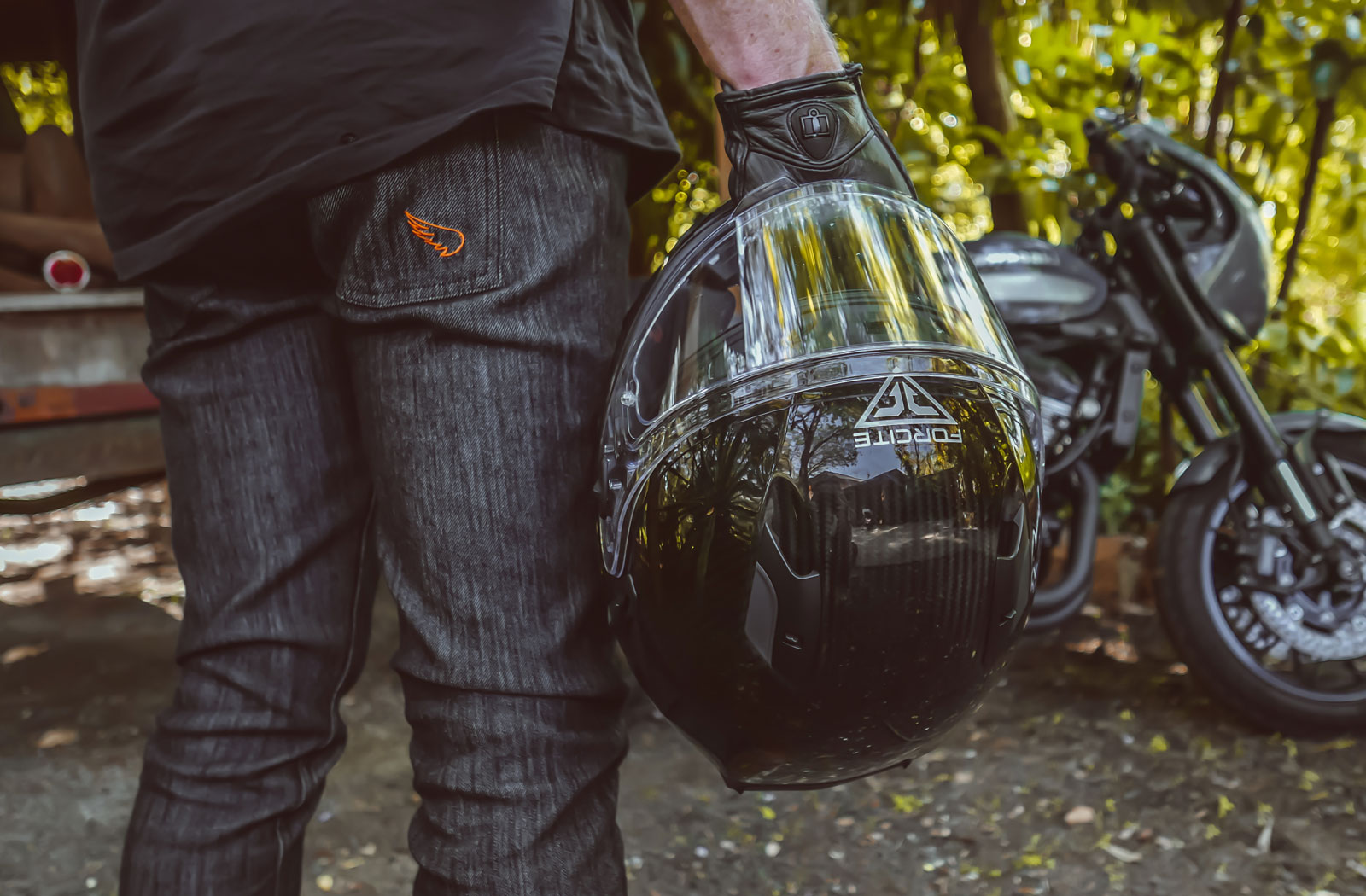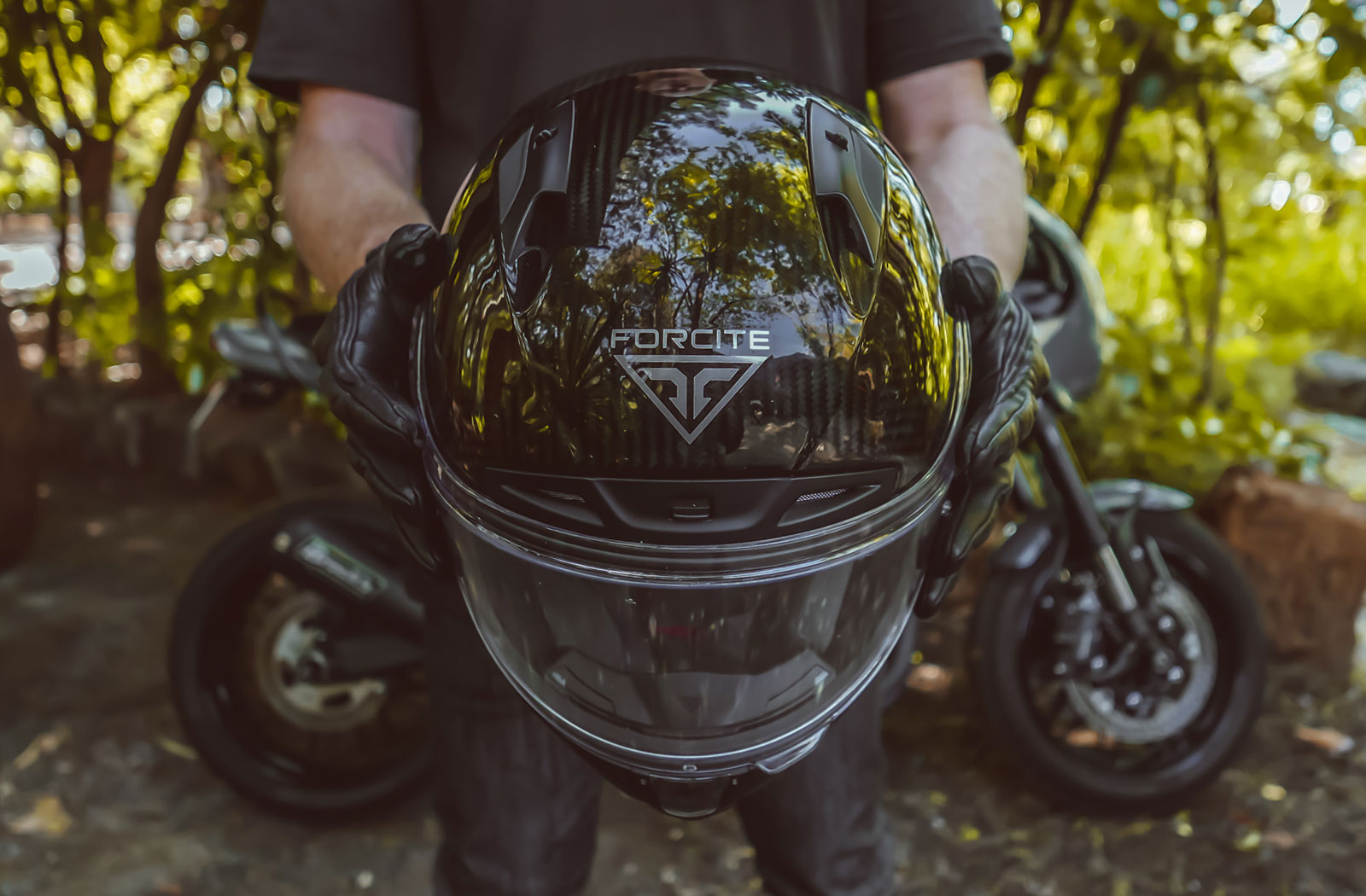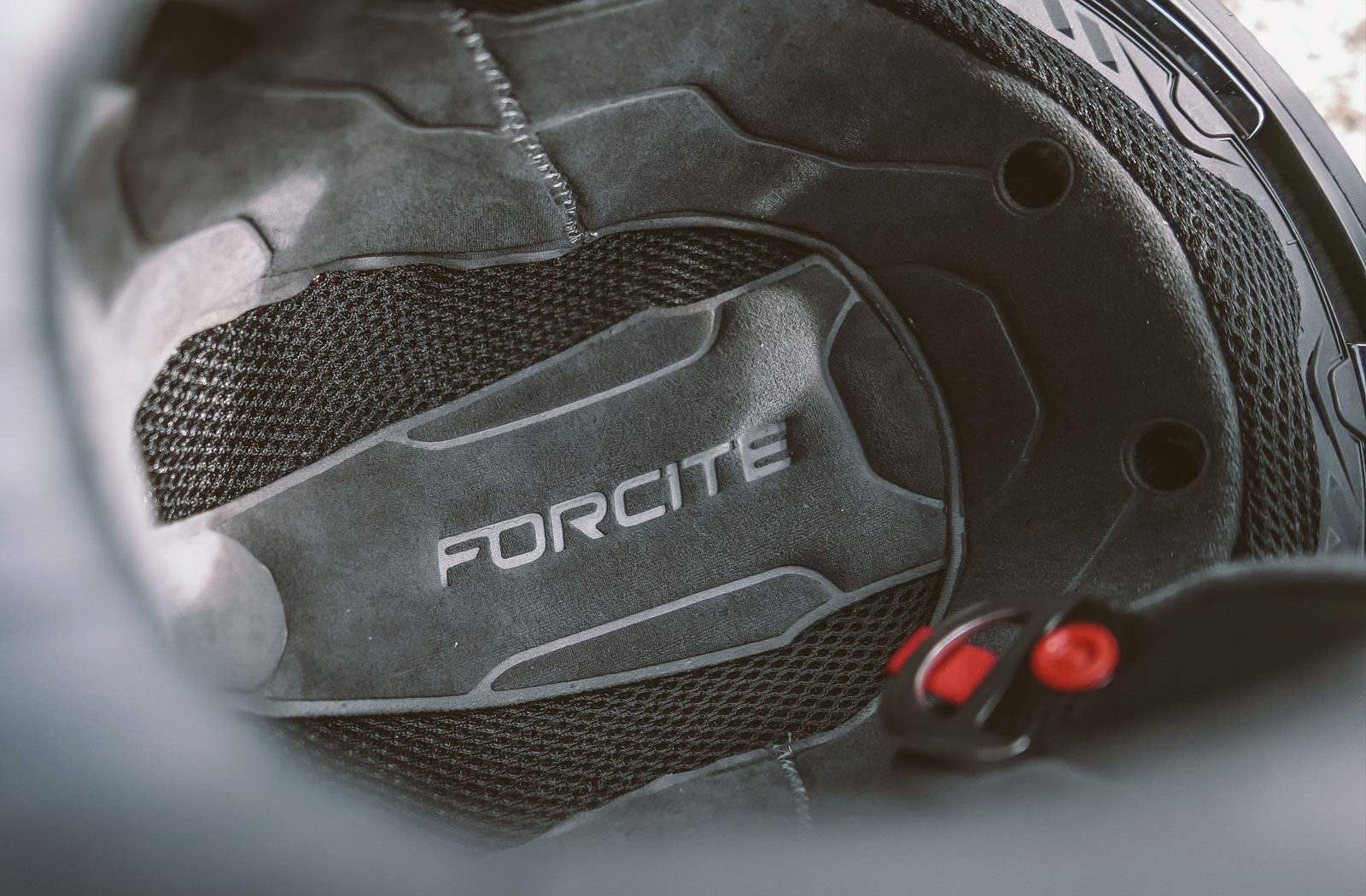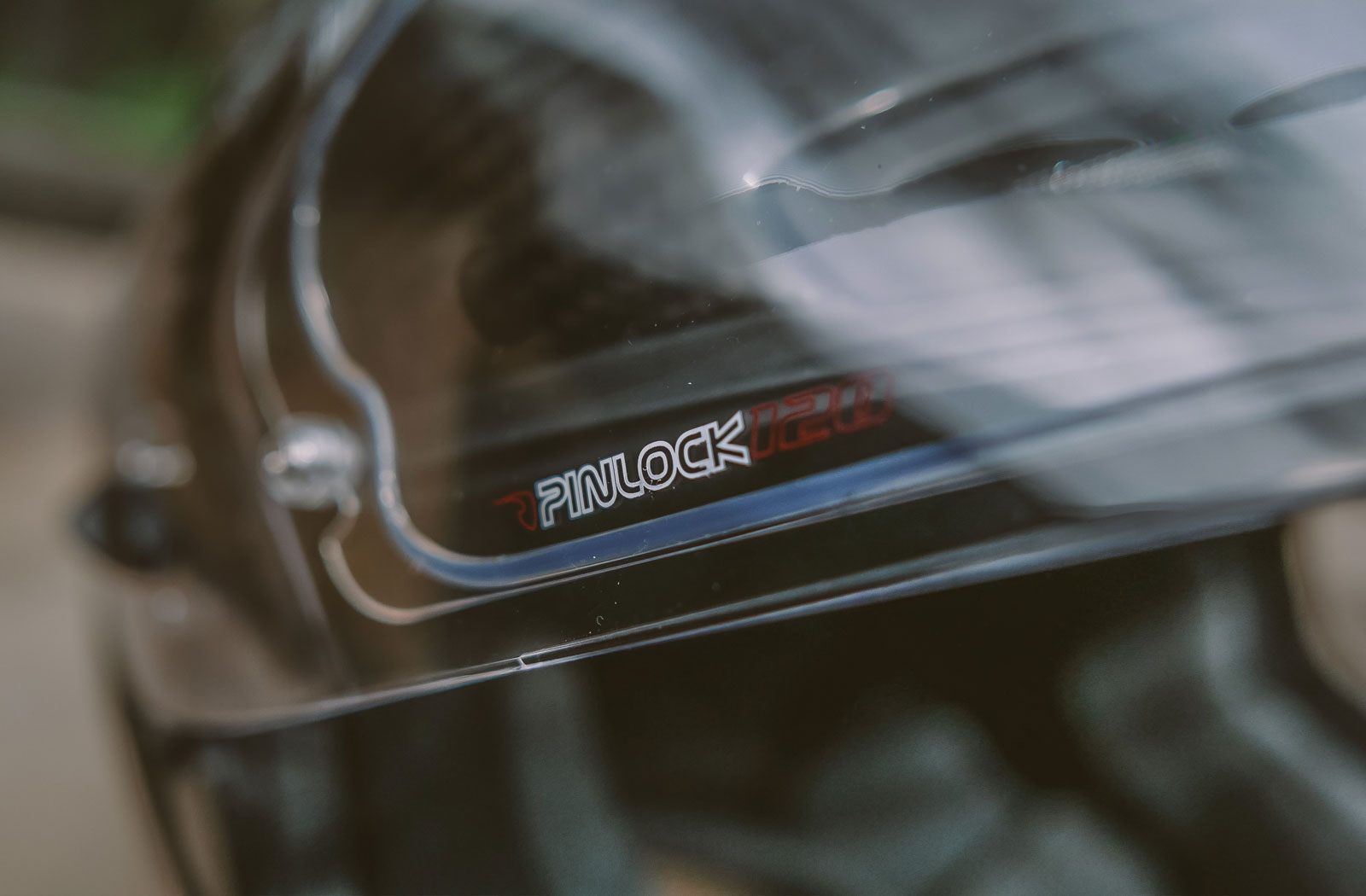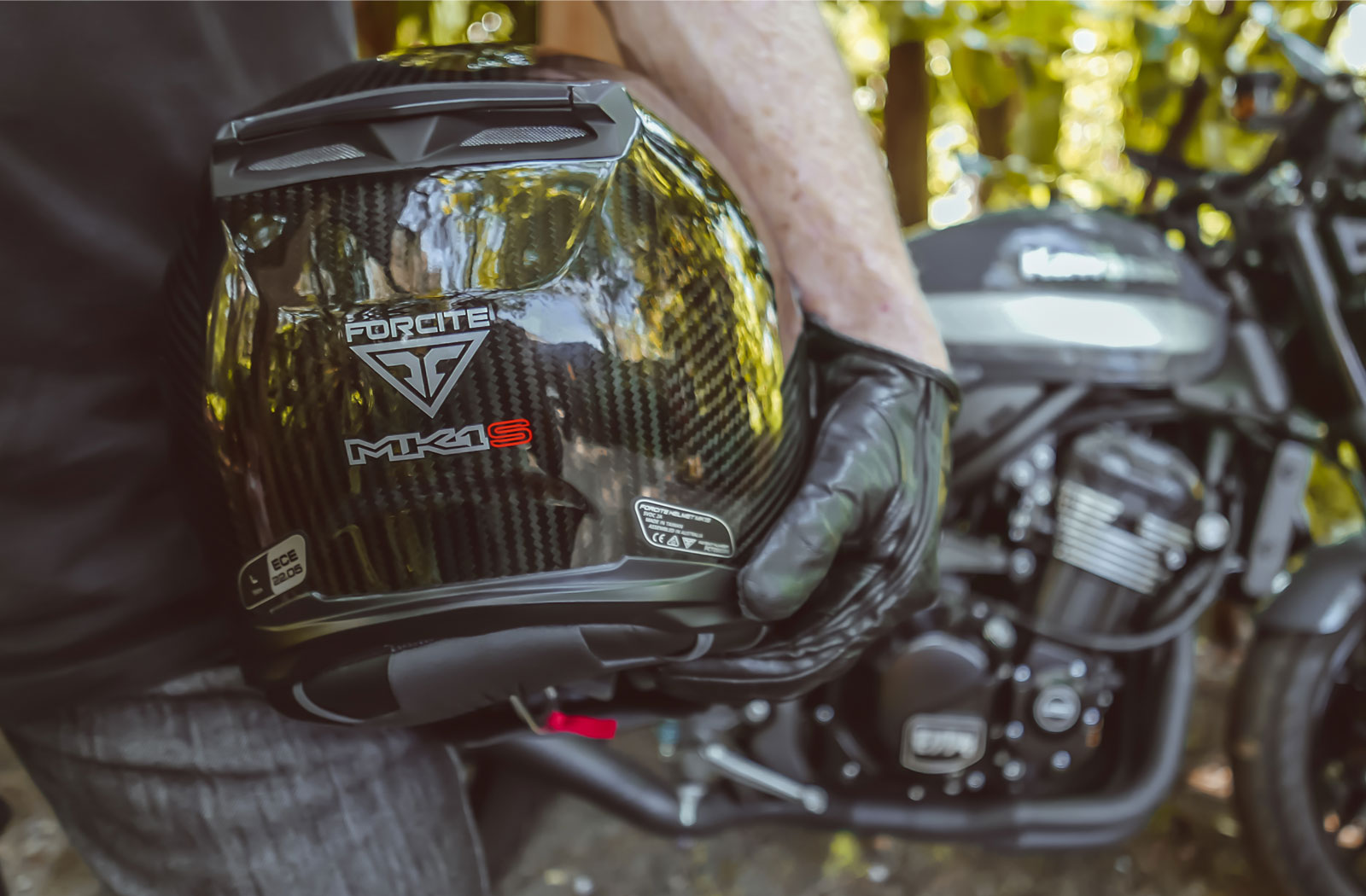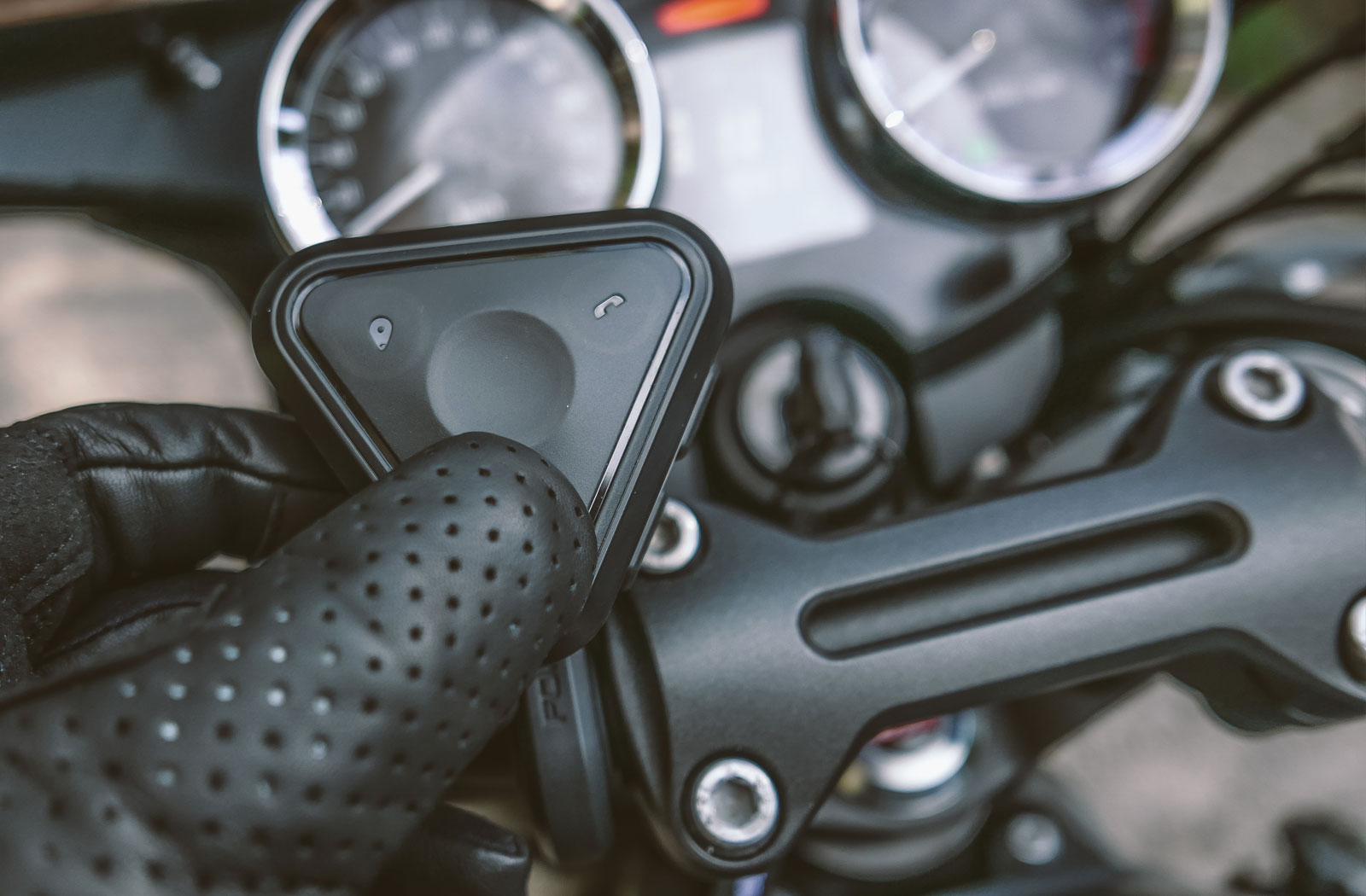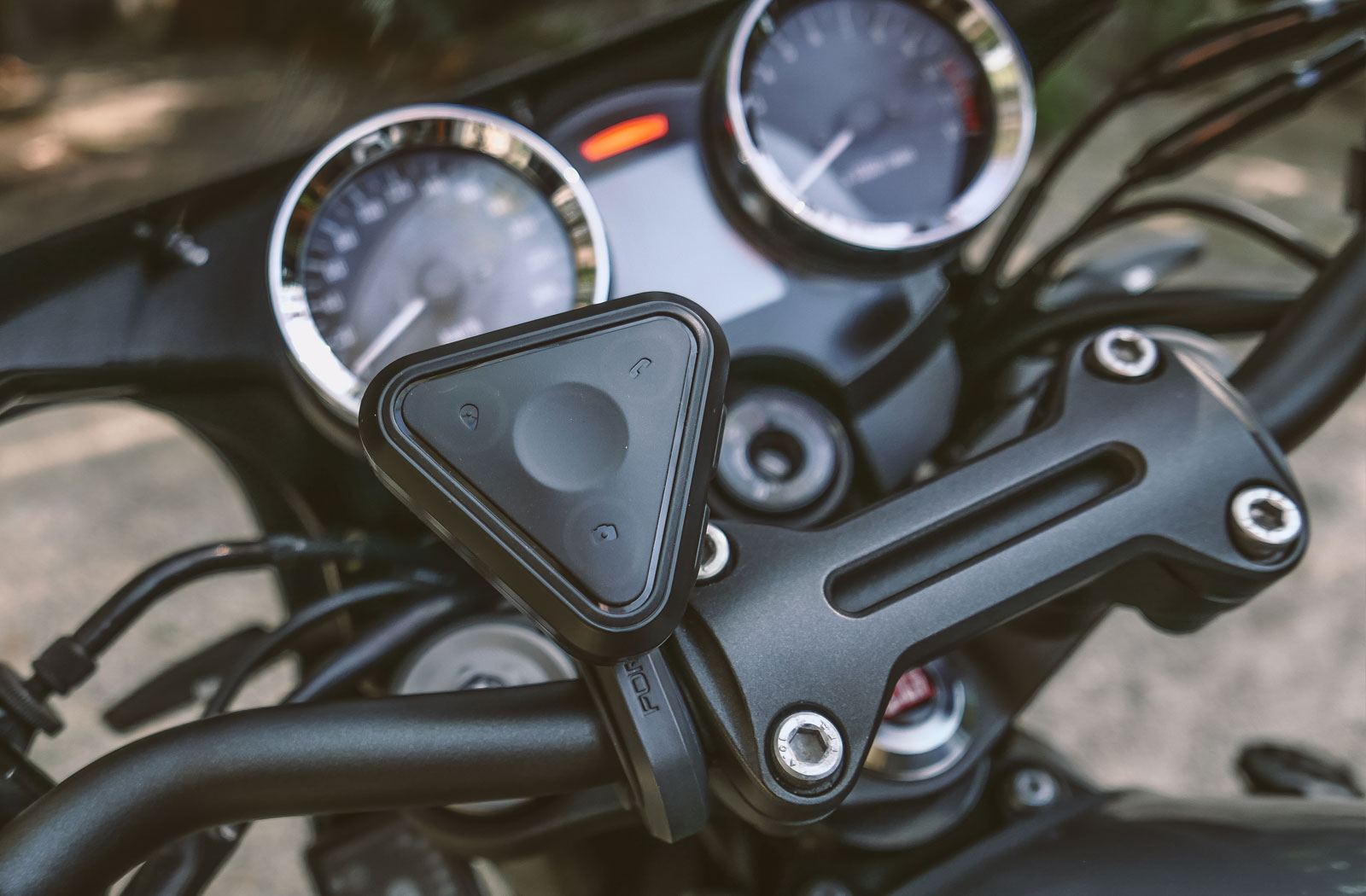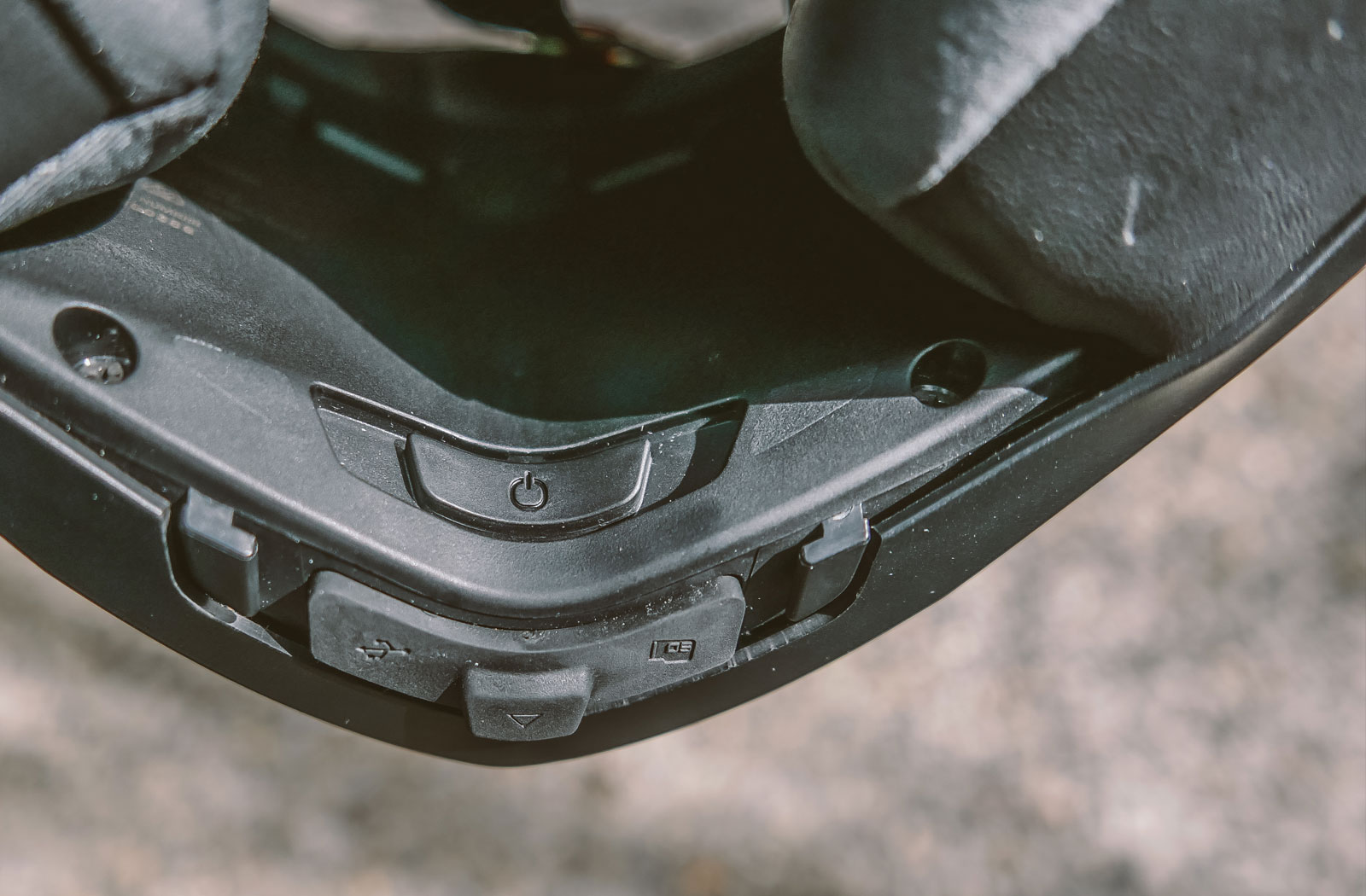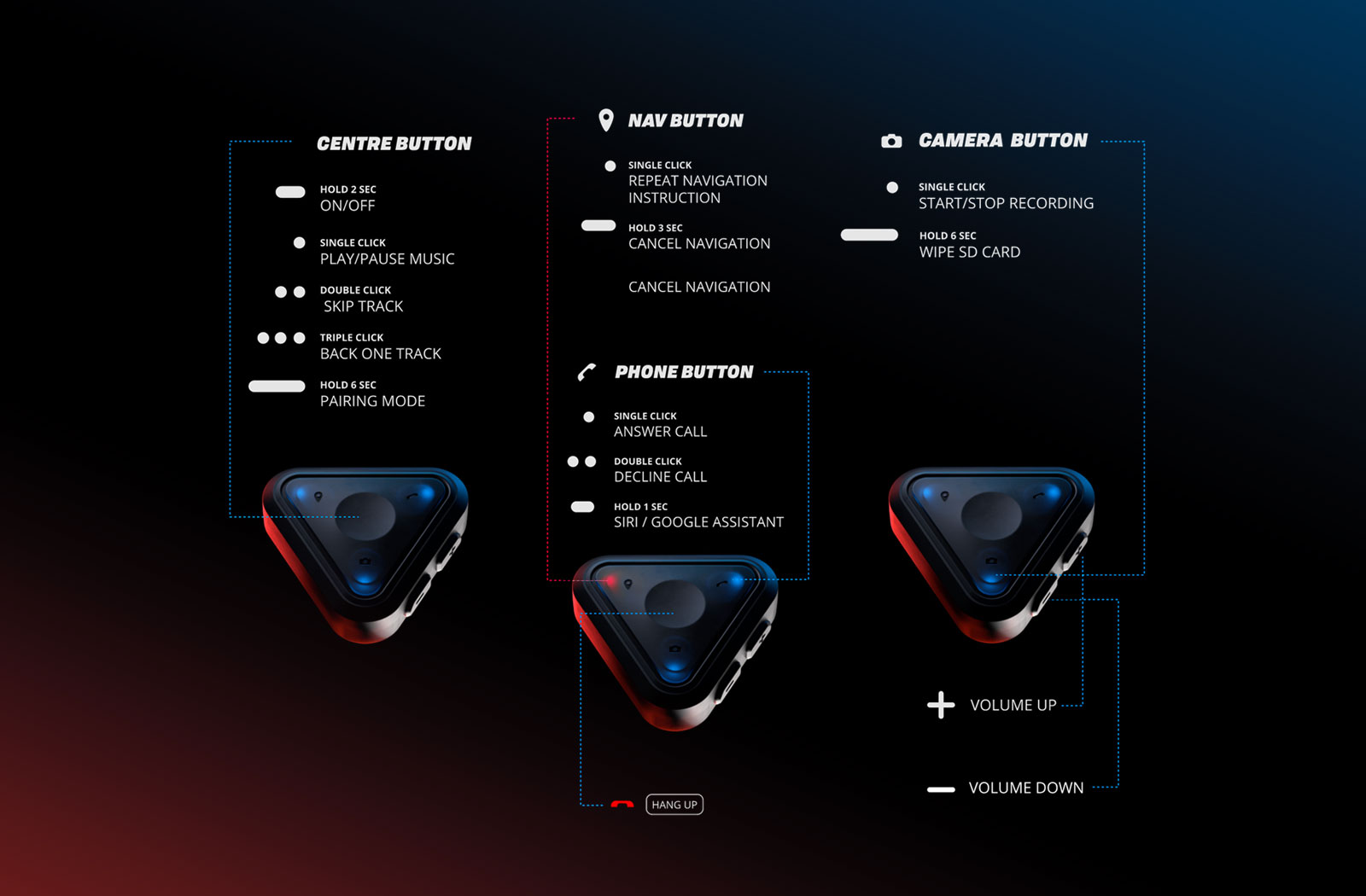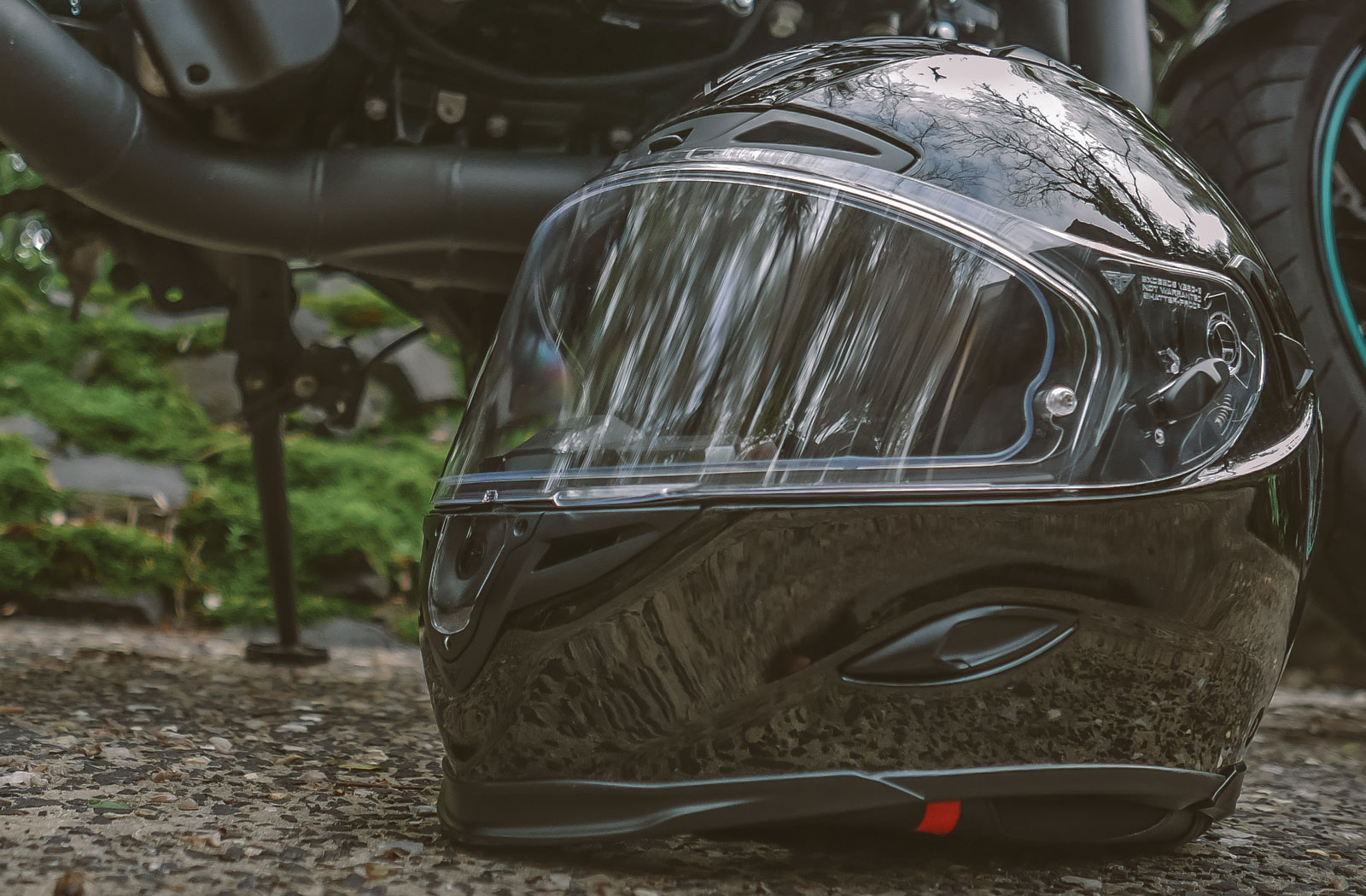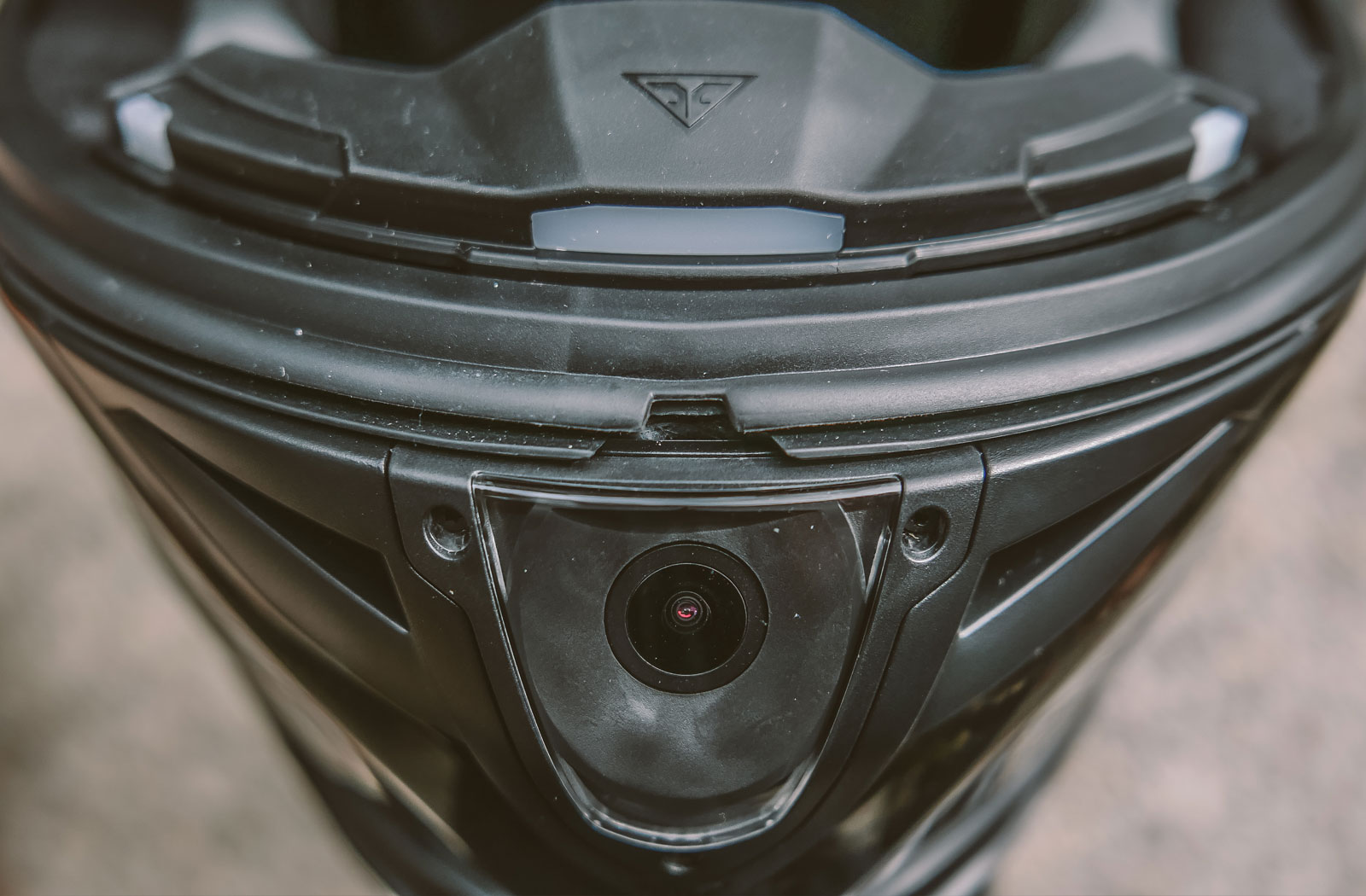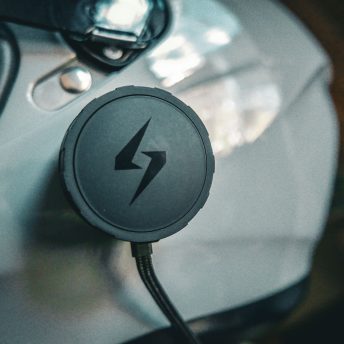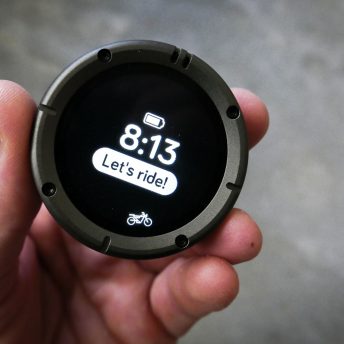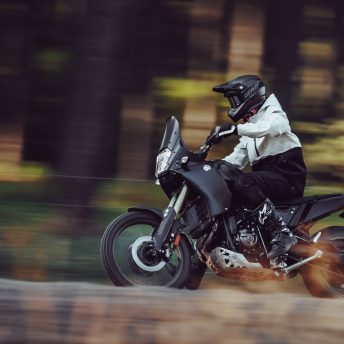A short while ago we caught up with the founders of the Australian motorcycle helmet manufacturer, Forcite. In our exclusive interview, we discussed the development of their business, their smart helmet technology, and the processes involved in creating such a unique product. Forcite recently released the latest iteration of their smart motorcycle helmet, the MK1S, and I managed to get my hands on one to give it a test run.
Since the release of the Forcite MK1S, it’s been receiving a lot of positive feedback from the first round of customers in their community forum. Forcite has also just been awarded ‘Best in class’ at the 2022 Australian Good Design Awards for product design in the Automotive and Transport sector. So, as you can imagine, my expectations for this helmet were high.
Forcite MK1S Specifications and pricing
The MK1S features a T400 carbon fiber composite outer shell. T400 carbon fibre was designed specifically for aerospace applications so along with being lightweight it’s incredibly strong. Inside the helmet is an EPS foam liner similar to those you’ll find in most helmets. In total the shell, liners, and integrated technology equate to around 1500g (large size) which positions it between the likes of Shoei’s RF-1400 and the super light AGV K6. Not bad for a helmet that packs so much tech into its design.
Smart technology is what makes the MK1S really special. Integrated into the helmet is a 1080p 30-60fps HD camera, a 40mm Harman Kardon speaker system, a rechargeable battery that offers 3-4 hours of continuous use while recording video (7+ using the app or listening to music), dual omnidirectional microphones and Forcite’s unique peripheral LED alert display system. That’s a lot of additional equipment to fit into a helmet but somehow Forcite has managed to do it seamlessly. So seamlessly in fact that the presence of all this gadgetry is pretty much undetectable to the wearer when it’s not active.
Other features of the Forcite MK1S smart helmet (yes there’s more!) include an integrated tinted UV-blocking sun visor, 8 ventilation ports, interchangeable visors with pin lock capability, the choice of either standard or premium padding (extra $79 AUD) and a two-piece removable chin wind curtain.
SPECIAL OFFER: Use the code ROTCR5 to get a 5% discount at forcitehelmets.com
The Forcite MK1S is available in either a matte or gloss clearcoat finish. This exposes the carbon fibre weave beneath allowing you to scrutinise the quality of its production. Judging by the weave on my test helmet Forcite’s QC control is top-notch. There were no noticeable defects in the gloss clearcoat or anything that would detract from its premium finish.
The MK1S comes in sizes ranging from XS to XL and is designed to best suit an intermediate oval head shape. Pricing for the Forcite MK1S starts at $1,200 AUD. Forcite offers add-ons at the point of purchase such as memory cards and different visors. These will, of course, bump the price up a bit, but Forcite has kept the cost of these items low and competitive so it makes sense to grab them all at once.
Forcite MK1S what’s in the box and setup
The MK1S comes in all-black packaging with silver foil branding which makes a great first impression. Inside the box, you’ll find a shelf containing all the included accessories and the helmet stashed safely beneath. The accessories you’ll find include a helmet bag, an operating guide, Bluetooth controller and mounting bracket, a maintenance tool, a Forcite certificate of authenticity with the production number of your helmet, and a USBC charger for the helmet and the remote.
As with any rechargeable device, before you use the helmet and remote they need to be plugged in and fully charged. Once it’s done you can mount the Forcite remote to your handlebars using the supplied bracket. The bracket fits onto 7/8th and 1-inch bars using the supplied rubber mounting rings and the controller is attached using a screw-on fastener.
The remote fastener is the downside to this setup because it needs to be done at the back of the unit which can be fiddly, especially if the space on your handlebars is limited or you’re wearing gloves. A clip similar to some of the smartphone motorcycle mounts we’ve featured in the past would be much more convenient, but this is certainly no deal breaker.
To operate the MK1S helmet you will need to download the Forcite app (IOS or Android). Once installed there’s a setup process that the app walks you through. This process involves registering your helmet and controller so they’ll auto-connect when they’re switched on.
A simple press of the power button on the inside of the chin bar turns the helmet on. A green LED lights up to indicate the helmet is active and you’ll hear a short beep through the built-in audio system. One important thing to remember is that in order to use all the helmet’s functions you will need the app running on your phone. Without it, there are a few things that may not function as expected such as answering phone calls. This is because the app works as a communication bridge between the helmet and the handlebar remote.
The Forcite smartphone app and remote
When you launch the Forcite app it defaults to a map screen. From there you can enter your destination, jump on your motorcycle, and the helmet’s smart features will guide your way. The Forcite app allows you to easily add waypoints to your journey, in case there’s a particular way you want to go, and you can share the route with other riders. The great thing about this navigation system is that it will also notify you of potentially dangerous hazards as well as the standard directional instructions. The app collects data about debris on the road, roadworks, speed camera locations, etc, and will notify you using different audio and visual alerts inside the helmet.
At the bottom of the app are 2 icons representing your helmet and the remote. These have green rings around them when everything is connected and double as battery life indicators. Between those 2 icons, you’ll find a record button so you can start the helmet’s camera recording with your phone if you want.
To enter the options/setting screen you tap an icon featuring 3 horizontal lines beside the map search bar. When that’s clicked you can adjust the audio and visual alerts coming through the helmet. In this menu, you can also edit your profile, use the media cable to access video content from your helmet and adjust other things such as the display, navigation settings, the helmet and controller settings, and access the help menu.
The Forcite MK1S remote is designed to allow you to control the helmet without having to touch your phone. It mounts directly to the handlebars so you can position it close to your left hand for quick button presses. The controller is triangular and has a button in each corner and the centre. These are used to perform basic functions relating to navigation, phone calls, camera recording, and controlling your music. There are several commands you’ll need to remember that involve either quick presses or holding the buttons. It will take you a while to familiarise yourself with their location and the different push combinations, but it’s all pretty straightforward. On the side of the controller, you’ll also find easy-to-access volume buttons.
Riding in and operating the Forcite MK1S
When you pull the Forcite on your head everything feels pretty familiar. It fits snug and the liner is soft against the skin. As you’d expect it’s a pretty tight fit at first because the liners are designed to relax over time to form a perfect fit. All the vents are opened using slide switches and the internal tinted visor is operated via a sliding switch on the left of the helmet behind the main visor hinge. The D-ring strap fastener is the same as any you’ve used before and the visor opens using a thumb tab.
The fit: The MK1S is a comfortable helmet. My test helmet has the optional premium padding upgrade (+$79AUD) which features contour-forming foam, a snug-fitting neck roll to help prevent wind noise and ingress, a large chin curtain, and plush materials. I have noticed a bit of pressure on my forehead in the MK1S. It hasn’t left me with any awkward dents on my head and I’m expecting it to lessen over time as the padding breaks in. The large chin curtain and neck roll are a welcome addition, particularly on cooler days and nights.
Wind noise and turbulence: This helmet is by no means the quietest I’ve tested; especially when speeds exceed 80km/h. The noise is probably on par with my old Bell Star Carbon, but nowhere near as quiet as my AGV K6. Ear plugs are of course advisable, but there’s another reason for that I will cover below.
Ventilation: The ventilation provided by the 8 vents in the MK1S is very good. The breeze coming through the chin ports was particularly noticeable. The only negative about the ventilation system is how the ports in the chin bar function. Rather than external switches like the other vents, they are operated using sliders inside the chin bar. This means that if you forget to close them before you set off you’ll have to pull over to do it. First-world problem.
Visor and aerodynamics: The field of view out of the MK1S visor isn’t the widest on the market but it’s not limiting. The mechanism that operates the visor feels a little clunky but it performs as it should. The visor has multiple open positions so you can ride with it partially open if desired.
The internal visor is great if you don’t like riding 24/7 with a tinted visor. It operates easily using an external slider and I’d describe it as a dark tint with a slight yellow tinge. If you’re riding into direct sunlight it’s a godsend. The only issue I have with the internal visor is that it hits the end of my nose when it drops down. This is probably only an issue for people like me with big pointy noses.
As for aerodynamics, most of my riding takes place on high-speed roads and I haven’t noticed any ungainly wind buffeting or turbulence thus far.
Battery life: Based on Forcite’s numbers you can get some really good use out of a single MK1S charge. Charging the helmet is done quickly via a USB-C post under the chin bar. With the camera on they estimate 2-3 hours of operation which is more than enough to capture the best parts of a day’s ride.
One thing to note is that due to the helmet’s standby function the battery will drain. It’ll take a couple of weeks or so, but it’s something worth remembering so you don’t get caught out with a flat battery just as you’re about to set off.
Recording video: You have 3 ways of recording video with the MK1S helmet. You can start recording either using the app, the remote on your handlebars or you can set it up to start recording as soon as the helmet is turned on. The latter is a great option for those who like the peace of mind a dashcam provides.
The lens of the camera is located in the center of the chin bar. It is positioned so that in a standard riding position it captures a good view of what’s straight ahead as well as the top of your handlebars. As for quality, it competes well with other similarly spec’d cameras and does a pretty decent job dealing with low light conditions. One thing it could benefit from is improved image stabilisation, but the bumps it captures can be smoothed out with decent editing software. As for the sound recording, the 2 internal mics captured what I was saying nice and clear and there was enough engine noise in the background to let you know I was on a motorcycle.
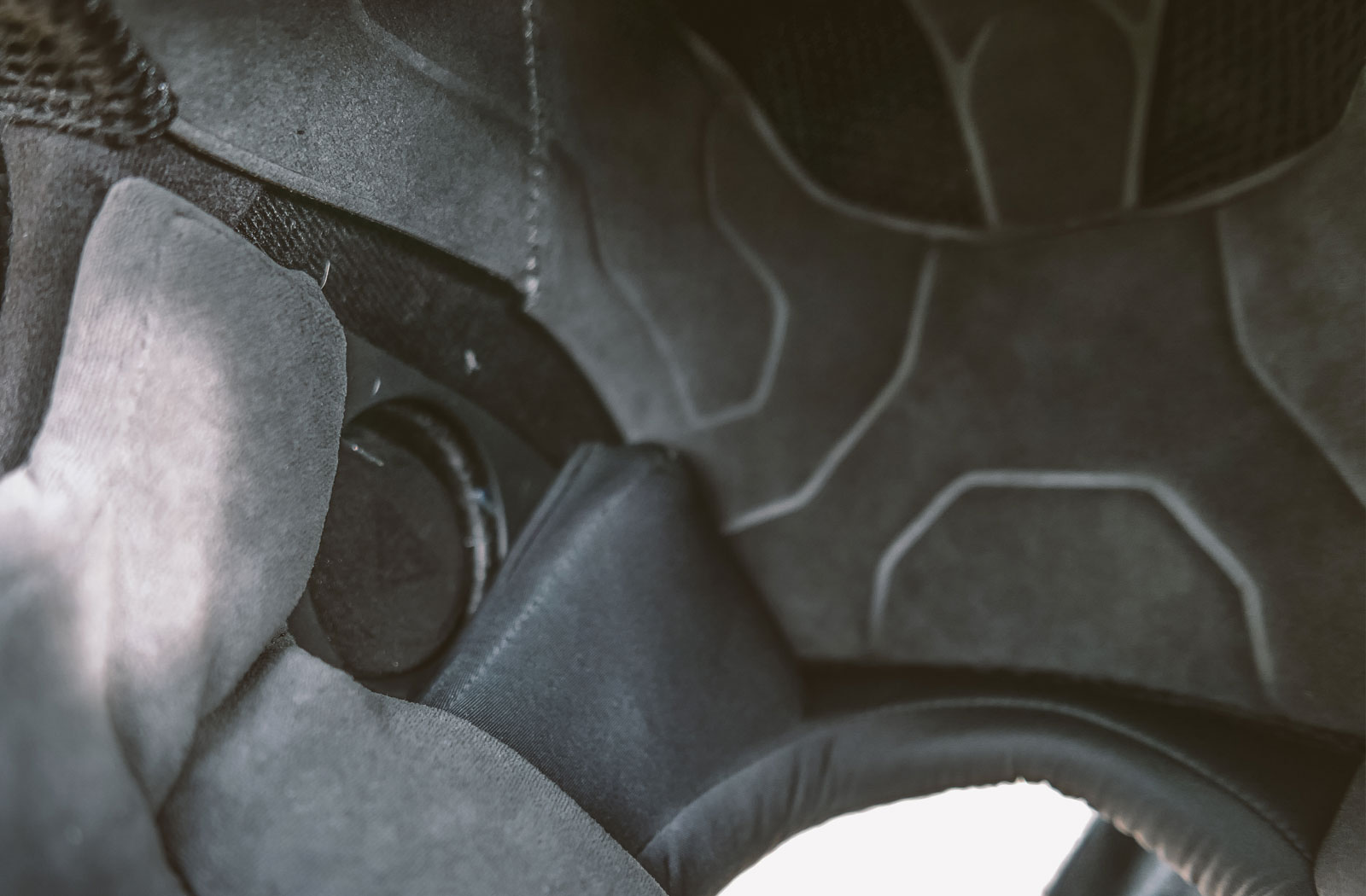

Audio and visual experience: The sound that the helmet delivers to you through the Harman Kardon speaker system is great, but earplugs are essential. This is because the treble seems to be turned up high. I would assume this is deliberate to help you hear what’s being played over the wind noise. Audiophiles might not like what this does to Phil Collins’ ‘In the Air Tonight’, but let’s face it, you’re never going to get the most out of your music when it’s coming through speakers stashed inside a motorcycle helmet.
Phone calls also work well while you’re on the move. At suburban speeds, it’s unlikely anyone will even know you’re riding a motorcycle. I called my wife when I was doing 110km/h on the freeway and she was very surprised by the clarity saying it simply sounded like I was on a hands-free call.
Thanks to the quality audio system, navigation commands are also very easy to hear. You can choose between 3 different voices for the prompts and they deliver instructions clearly and concisely. The best part of the navigation system however is the unique peripheral lighting bar.
Sitting at the top edge of the chin bar beneath the breath guard is a white strip that’s about 5 mm thick and 15cm long. Inside it is an LED light array that displays navigation alerts using different lighting patterns and colours (The video below shows how this looks in action). I’ve ridden in the helmet in full sunlight and at night and the lights are very easy to see. At night they are of course much more intrusive but never so much that they’re overly distracting. It’s a beautifully simple mechanism and the thinking behind it is nothing short of genius.
Final thoughts on the Forcite MK1S helmet
When considering a helmet purchase a price tag of $1299 AUD can be hard to swallow. But it’s important to factor in exactly what you’re getting with the Forcite MK1S.
The MK1S helmet itself isn’t quite up to par with the likes of a similarly priced Shoei. I think it’s pretty similar in quality and comfort though to the Bell Star DLX MIPS I recently tested which retails for $890 AUD. To see the real value here you’ve got to factor in all that tech. Sena’s latest 50C Harman Kardon, 1080p camera equipped intercom system retails for $899 AUD. Slap that on the Bell Star and you’ve spent close to $1800. Then there’s the fact that the Sena is a bolt-on solution as opposed to the seamlessly integrated tech of the MK1S. Personally, a $500 saving and something I don’t have to spend an hour installing is a lot more appealing to me.
The Forcite MK1S is a huge jump forward in helmet technology. I’d regard it as significant as the introduction of parking sensors to cars. There will be plenty of riders who don’t want the distractions this technology introduces to their ride, but there are countless others who are sure to benefit from it. Seamlessly integrating all this functionality into a helmet that’s lightweight and both ECE and DOT certified is impressive to say the least. I had high hopes for this helmet and Forcite delivered. I sincerely hope we’ll be seeing more innovations from this brilliant Australian helmet manufacturer in the future.
FORCITE HELMETS
[ Save 5% off your purchase using the code ROTCR5 ]
THE GOOD
- Seamless inbuilt technology
- Peripheral LED alerts are ingenious
- Good value for money considering all the tech
- Great customer support and rider community
- Ideal all-in-one vlogging helmet
THE NOT-SO-GOOD
- Battery drain can catch you out
- Wind noise high for the price point
- Visor mechanism feels a little clunky
- Initial setup can be fiddly
